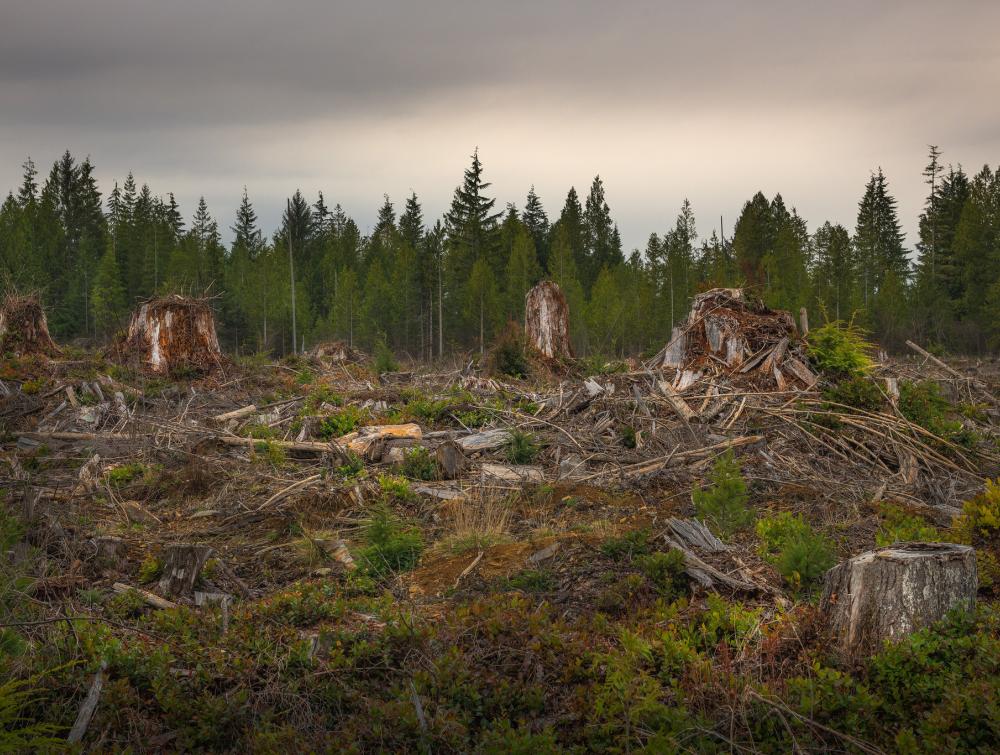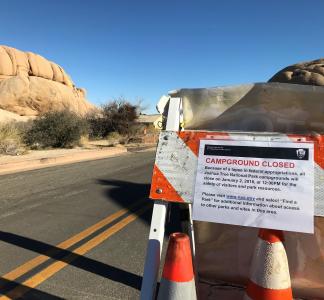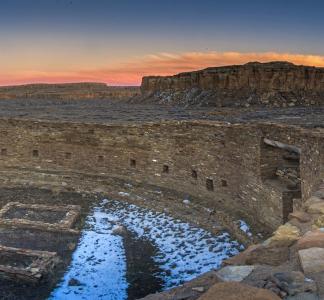People need to know what their government is doing to the environment; this law makes it possible

Stumps and felled trees on Washington's Olympic Peninsula
Mason Cummings, TWS
NEPA ensures public input, scientific review
The National Environmental Policy Act, or NEPA, has been called the Magna Carta of environmental laws. And there’s a great chance you’ve never heard of it.
However, like that 13th-century declaration of rights and judiciary process, the National Environmental Policy Act continues to guide the way we do things at a fundamental level. Because of NEPA, you’re not likely to wake up one morning and find that a toxic waste dump has secretly been installed behind your garden shed. Because of NEPA, the Federal Highway Administration can’t force a new road through delicate wildlife habitat on a whim. And because of NEPA, an agency can’t decide to clearcut old-growth national forests without first explaining themselves and offering their plan up for public scrutiny.
Because of NEPA, the government can’t force a new road through delicate wildlife habitat on a whim
But while NEPA is a true bedrock conservation law, it’s sadly not immune to shifting political tides or special interest-driven attacks. In keeping with an anti-democratic and anti-transparent approach to governing, the Trump administration and its partners in Congress have been working overtime to weaken the law and make it easier to keep the public in the dark about actions that might end up hurting their communities or shared public lands and waters.
Right now, the U.S. Forest Service is insisting on a new rule to overhaul the way it complies with NEPA and limit public input and scientific oversight on 193 million acres of national forest lands across the country. This could ramp up shortsighted logging and road-building and jeopardize sources of clean drinking water, wildlife habitat and outdoor recreation opportunities.
We’re working to fend off these kinds of attacks and will be asking our members and supporters for their help to do it. Read on to learn a little bit more about NEPA and why this obscure law is so vital.
History shows NEPA’s key role
In January 1970, Americans were still grappling with the image of fire dancing on the oil-slicked surface of Ohio’s Cuyahoga River the previous summer, but the first-ever Earth Day celebration was still a few months off. It would be about another three years before an astronaut snapped the heart-stirring “Blue Marble” photo of our planet through a window of the Apollo 17 spacecraft. What there was to do in that restless, liminal moment of dawning environmental awareness was assemble the un-glamorous nuts and bolts of a new conservation regime–to build a lasting legal framework that would protect mankind’s only home from mankind’s worst impulses.
Against that backdrop, President Richard Nixon signed NEPA into law. While the news was greeted with some fanfare, arguably the bill’s most enduring impacts have lived in the humble realm of dotted i’s and town meetings. It’s a workmanlike law that ensures due diligence about whatever we’re doing and whomever it will affect.
NEPA makes the government consider how a project will affect the environment and gives the people who will have to live with the consequences a fair chance to weigh in on it
In short, NEPA requires the federal government to “look before [it] leap[s].” If an agency wants to build a trash incinerator, dam a river, widen a highway or log a forest, it must first both formally consider how that project will affect the environment and make sure nearby communities—the people who will have to live with the consequences—get a fair chance to weigh in on whether it’s a good idea.
It’s been a critically important tool for our democracy, ensuring transparency and accountability from large and complicated decision-making entities that could all too easily operate independent of what actually affects people “on the ground.”

Aerial view of Oak Ridge National Laboratory campus in Tennessee
Oak Ridge National Laboratory, Flickr
A classic example of NEPA’s value is the cleanup of the famed Oak Ridge Laboratory, a huge Department of Energy facility established in Tennessee as part of the Manhattan Project in the early 1940s. Decades of nuclear research and development left stockpiles of hazardous waste on the site and necessitated the construction of a waste processing center. But while preparing the environmental impact statement required by NEPA, the government found that the level of waste treatment they’d originally planned wouldn’t be enough to protect people and the surrounding environment from dangerous exposure. NEPA allowed the agency to catch the problem, tweak its plan and let the public know what was going on.
Not all of NEPA’s successes are that big or dramatic. It has also guided agencies through intricate conservation problems in ecosystems that can’t withstand shortsighted development.
Take Bolinas Lagoon. It’s tucked away along a picturesque stretch of California State Route 1 a few miles northwest of the Golden Gate Bridge. But to wildlife, the little tidal estuary is no mere scenic detour—it’s a key stopover and winter resting spot for birds migrating up and down the coast, besides providing habitat for salmon and trout.
For years, locals have been concerned about diminution of tidal flow that feeds the lagoon. So in 2002, the Army Corps of Engineers unveiled a plan to repair Bolinas through a large-scale dredging operation they said would remove enough sediment to prevent key mudflat habitat from converting to salt marsh. But that strategy met with strong opposition after a survey of environmental impacts conducted under NEPA found it might actually increase sediment while destroying an ecologically important layer of sub-lagoon mud. The project was scrapped, saving taxpayers millions and averting a solution that may have ended up worsening the underlying problem.
Heightened importance in an era of climate crisis
In 2016, after many years of development, the Obama administration released instructions on how to consider the impacts of climate change in NEPA reviews. This guidance confronted the huge, existential threat of our time and helped federal agencies translate their responsibilities into technical terms (for example, how to quantify the toll of heat-trapping greenhouse gas emissions a project will produce before ever sinking a shovel in the ground).
Unsurprisingly, Trump axed the climate guidance shortly after being sworn in as president, and his White House Council on Environmental Quality recently issued a revision that would offer plenty of loopholes for agencies not to comprehensively consider climate impacts.
These actions fit neatly into an anti-science “energy dominance” agenda that caters to moneyed interests by making it easier to exploit resources and pollute, leaving frontline communities—predominantly people of color and Indigenous and low-income populations, those disproportionately impacted by environmental threats—exposed to harm.
The courts have upheld the requirement to consider climate under NEPA a number of times, but there’s no doubt that these provisions—the law in general, too—is under sustained attack, and at a time when our environmental challenges seem more dire and complex than ever.
We can’t allow science and the public to be shut out of what happens on public lands, leaving major decisions to be hashed out in proverbial smoke-filled rooms with no oversight.



